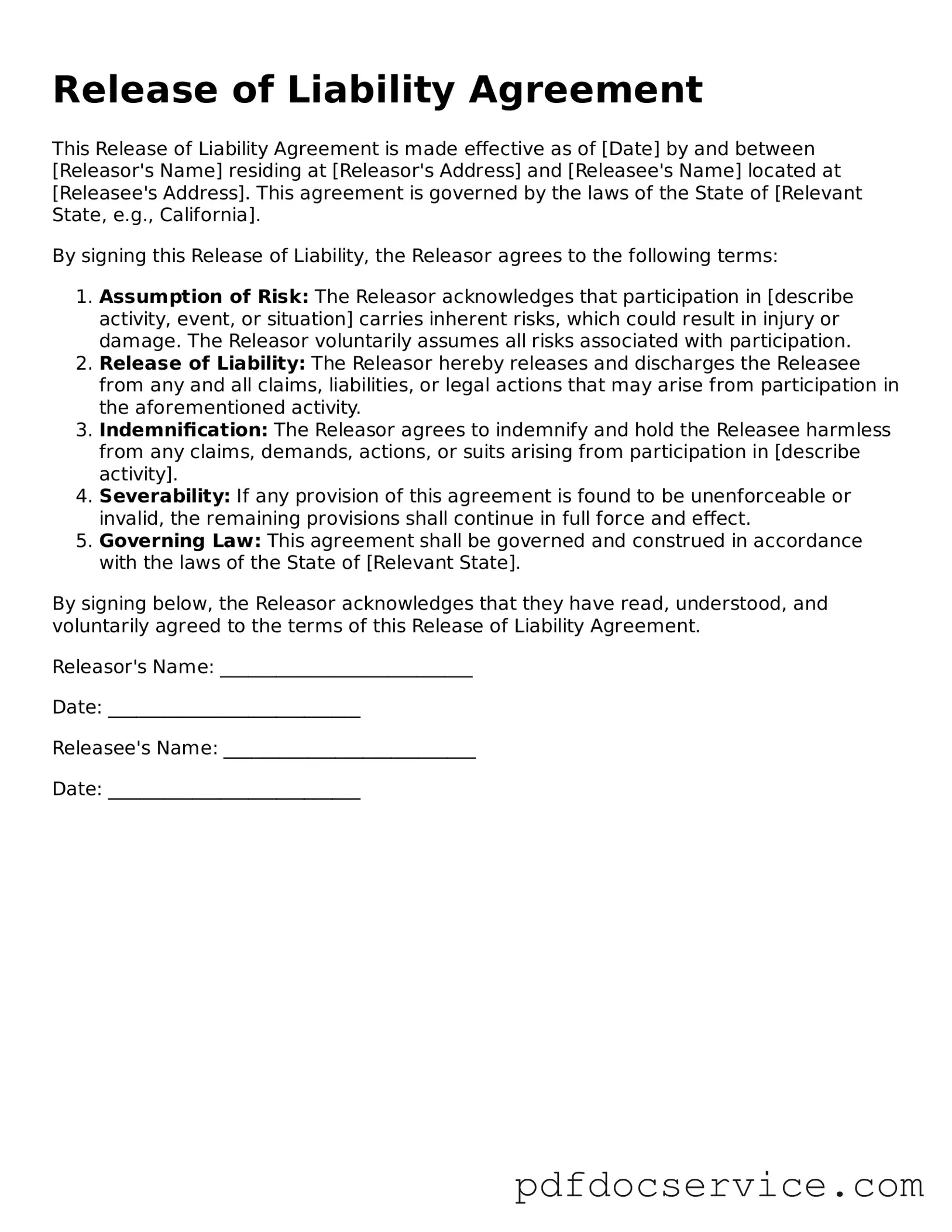A Release of Liability form is a legal document that protects an individual or organization from being held responsible for injuries or damages that may occur during a specific activity or event. By signing this form, participants acknowledge the risks involved and agree not to hold the organizer liable for any accidents or injuries that may arise.
This form is commonly used in various situations, including:
-
Sports events or activities
-
Outdoor adventures, such as hiking or rock climbing
-
Workshops or classes involving physical activity
-
Recreational facilities, like gyms or pools
Using a Release of Liability form in these scenarios can help ensure that all parties understand the risks and agree to the terms of participation.
Typically, all participants in the activity should sign the form. If the participant is a minor, a parent or guardian must sign on their behalf. This ensures that the responsible adult acknowledges the risks and agrees to the terms for the minor.
A well-drafted Release of Liability form should include:
-
The names of the parties involved
-
A clear description of the activity
-
A statement acknowledging the risks associated with the activity
-
Terms of the release, specifying what liabilities are waived
-
Signature lines for all participants
-
The date of signing
Including these components helps ensure clarity and enforceability.
Yes, a properly executed Release of Liability form is generally enforceable in court. However, enforceability can depend on several factors, such as the clarity of the language used, the specific laws in your state, and whether the form was signed voluntarily. It is essential to ensure that the form is clear and comprehensible to all parties involved.
While a Release of Liability form can protect against certain liabilities, it may not fully protect against gross negligence or willful misconduct. Courts may not enforce a release if they determine that the organizer acted recklessly or intentionally caused harm. It is crucial to understand the limits of the protection offered by the form.
To maximize the effectiveness of a Release of Liability form, consider the following tips:
-
Use clear and simple language.
-
Ensure that all participants read and understand the form before signing.
-
Have the form reviewed by a legal professional to ensure compliance with state laws.
-
Keep copies of the signed forms for your records.
Taking these steps can help reinforce the validity of the document.
If a participant refuses to sign the form, it is advisable to evaluate the situation. You may choose to:
-
Discuss their concerns and clarify the purpose of the form.
-
Explain the risks involved in the activity.
-
Consider whether participation should be allowed without a signed release.
Ultimately, it is important to prioritize safety and ensure that all participants are informed of the risks before engaging in the activity.
Yes, a Release of Liability form can be modified to suit the specific needs of an event or activity. However, any changes should be made carefully. Ensure that the language remains clear and that all participants understand the modified terms. Consulting with a legal professional before making significant changes is advisable to maintain the form's enforceability.
